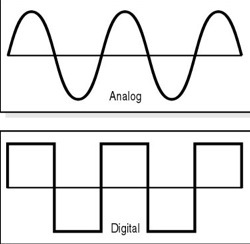Following the Action - Is a directing technique which captures all the movements a character makes when he/she moves from location to location. In bigger shoots there will be more than one camera shooting this action.
This provides the editor with a range of shots to make selections from when the entire sequence is being edited together.
At the editing stage, the editor will switch between camera angles depending on what the subject is doing and what coverage the director and editor decide best advances and narrative.
This effect of varying distances and angles, as opposed to sticking to one shot all the way through, brings shape, texture and depth to the scene.
The editor uses action matches to preserve continuity, making cuts invisible, and the audience gets a multi-faceted perspective on events which engages them in the action.
Unit 16 Film & Editing Techniques
Monday, 2 May 2016
Multiple Points of View
At the editing stage, the editor will switch between camera angles depending on what the subject is doing. This effect of changing distances and angles, opposed to sticking to one shot all the way through, brings shape, texture, and depth to the scene. The editor uses this to keep continuity, which makes the cut invisible and the audience gets a multi-faceted perspective on events which engages them in the action.
Multiple Points of View - Is a technique where a number of different camera angles are employed to film a single event.
The difference between 'following the action' and 'multiple points of view' is that in the latter we are focused on a single piece of action seeing that action from many different vantage points.
The Multiple Points of View technique can:
Multiple Points of View - Is a technique where a number of different camera angles are employed to film a single event.
The difference between 'following the action' and 'multiple points of view' is that in the latter we are focused on a single piece of action seeing that action from many different vantage points.
The Multiple Points of View technique can:
- Enable the audience to see a bigger picture and help them understand what is going on;
- Add dynamism to the action making the scene more engaging;
- Manipulate time: observing the same action from multiple perspectives elongates time;
- Reveal key information from different perspectives.
Sunday, 1 May 2016
Manipulation of Diegetic Time and Space
The manipulation of diegetic time and space refers to a
range of techniques used in filmmaking to change the dimensions of space and
time in ways that would not be possible in real life.
- Time can be condensed and stretched.
- Space can be compacted and expanded.
Diegetic Sound – Sound
that the actors can hear and are aware of it.
Non-diegetic Sound – Sound
that the actors cannot hear and are not aware of.
Wide angles can be used to constrain large spaces to the
dimensions of aspect ratio and frame.
Deep focus can be used in conjunction with lighting effects
to add enormous depth and detail to interior spaces.
Cutting from one location to another location can make the
two appear connected.
Editorial techniques such as ellipsis and expansion of time
manipulate time as it is experienced to the audience.
Flash backs presenting recollected events in a character’s
memory can be used to reveal key aspects to the plot;
Flash forwards into the future can reveal what a character
is planning/expecting.
Video
Video is an electronic medium used for analogue recording,
copying, playback, broadcasting and display of moving visual and audio media on
magnetic tape using an analogue video signal.
Digital video is a type of digital recording system that
works by recording, copying, playback, broadcasting, and display using a
digital rather than an analogue video signal.
The difference between analogue
and digital technologies is that analogue uses the information and it is
translated into electric pules of verifying amplitudes. Digital technology’s
information is into a binary format so zeros and one’s where each bit is
represented of two distinct amplitudes.
Digital cinematography refers to
the process of capturing motion pictures as digital video images as opposed to
the historical use of motion picture celluloid film.
Digital capture may happen on
video tape, hard disks, flash memory, or other media which can record digital
data through the use of a digital movie video camera or other digital video
camera.
Saturday, 30 April 2016
Manipulation of Diegetic Time and Space Example
Indiana Jones and the temple of doom is the example I have chosen for the manipulation of diegetic time and space.
I have chosen this example because it clearly shows what the director wanted because Steven Spielberg wanted to stretch out the time and space effect to make the audience feel tense because they want the main protagonist to get out of the trapped room alive.
Spielberg has put this effect on and is a very good example of the technique used because the spiked ceiling is coming down fairly fast but at some points it slows down dramatically which is very noticeable and extends the manipulation of time and space element within the editing.
Analogue and Digital
Digital imaging does not require chemicals. Digital images are captured using arrays of photo sensors and these images are then processed by specialised software, or film can remain in digital form for a digital projection.

Analogue is commonly referred to as chemical photography. Analogue is contrasted with the digital process. Analogue is referring a signal whose output is proportional to the input.

Analogue is commonly referred to as chemical photography. Analogue is contrasted with the digital process. Analogue is referring a signal whose output is proportional to the input.
Subscribe to:
Comments (Atom)